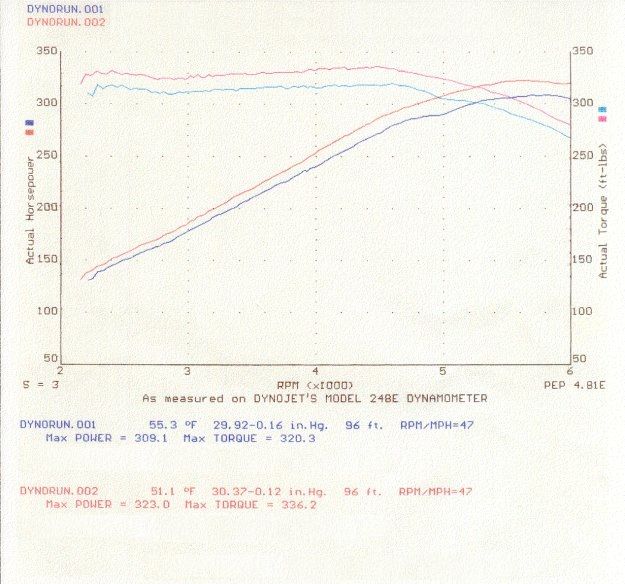Re: Upgrading Power on 5.7 300hp
Intersting location for a wide band Bell Howell use's the same port, Even a wide band needs to run at 700-900 degree's i have great doubts that exhaust gas runs 700 on the internal and 120 on the surface. This is just my own belief i have no way to proving it.. A great resource would be a guy called Bob at
OBD Diagnostics his experience and knowledge with marine efi is very in depth....i still believe your in a lean burn detonation spark problem.
http://www.ion-ign.com - Wide-Band Oxygen Sensor Controller Theory
Wide Band Exhaust Gas Oxygen Sensor Heater Problems
Now that we understand the basic principle of operation, lets address some physical concerns. We already acknowledged that the temperature of the sensing cell must be greater than 600F degrees before the output voltage becomes active. In the real world you want the temperature to remain between 750F degrees and 900F degrees for the most linear output voltage. To maintain these temperatures, an electric heater unit is powered to heat the sensor to the proper operating temperature range.
But there is another problem here. The exhaust gas temperature varies with engine power, and these variances affect the cell temperature regardless of the electric heater action. The exhaust gases can add to the heater power (during high engine power) and cease to add heat to the sensor during very low engine power levels. Therefore the heater circuit must be able to adjust itself for these exhaust gas flow temperature differences.
Another problem is that the sensing cell will start developing output voltage below 700F degrees while the pumping cell can't effectively move oxygen ions until it has reached 700F degrees. This means that we can not use the sense cell output voltage until the pump cell oxygen ion pumping action can control the sense cell output voltage. So we need a fast heater during engine start up, and a detection system to determine when the wide band oxygen sensor output voltage is valid.
Many WBOS controllers out there do not address the exhaust gas temperature fluctuations, and simply apply a fixed electrical power to the heater unit. They are branded as "non-scientific" models. The more accurate models must incorporate solutions to the temperature problems described above.
Another concern is the factory established calibration resistor which is intended to compensate for manufacturing differences between units. This calibration resistor value will indicate a correction factor required for the pumping cell and the sensing cell interaction during operation.
Last of all, exhaust gas back pressure can have an effect upon the sense cell output. This has to do with the porosity of the sense cell. If the cell material has pores to small, then exhaust gases will be restricted, and exhaust back pressure will vary the effectiveness of the pumping cell. If the pumping cell effectiveness changes, then the pumping cell current has a varying effect upon the sense cell. If the pumping cell has pores that are to large, then exhaust gas contaminates can get lodged into the pores and once again reduce the pumping cell effectiveness.
OS manufacturer's attempt to select the optimum pore size, which reduces the effect of exhaust gas back pressure without contaminate problems. This optimum pore size is hard to maintain during volume manufacturing. Highly accurate OS controllers may want to consider this exhaust gas back pressure in the OS measurement process, if the back pressure is significant. High performance engines usually have mild back pressure and are not affected to any significant degree by exhaust gas back pressure changes to the OS measurements.






















